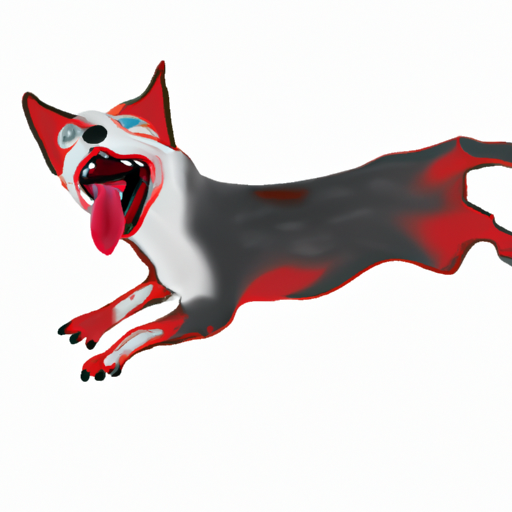Dogs’ eyes turning red when they are excited is a common occurrence that many pet owners observe. While this is usually a harmless phenomenon, understanding why and when it happens can help you better understand your canine companion.
Table of Contents
- Understanding Your Dog’s Eyes
- What Causes Redness in Dogs’ Eyes
- When to Be Concerned
- How to Care for Your Dog’s Eyes
- Frequently Asked Questions
Key Takeaways
- Dogs’ eyes can turn red when they’re excited due to increased blood flow.
- Redness is usually harmless, but excessive or prolonged redness can indicate health issues.
- Regular eye checks and care can help keep your dog’s eyes healthy.
Understanding Your Dog’s Eyes
To understand why your dog’s eyes turn red when excited, it’s important to first understand how a dog’s eyes function. Dogs have a third eyelid, known as the nictitating membrane, which helps protect their eyes and keep them moist. This membrane is more visible when a dog is excited or stressed, and can sometimes appear red due to increased blood flow.
It’s also worth noting that dogs, like humans, have blood vessels in their eyes. These vessels can dilate and become more visible when a dog is excited, resulting in a red appearance. This is much like how our faces can turn red when we’re excited or embarrassed. You can learn more about this in this article by the American Kennel Club.
What Causes Redness in Dogs’ Eyes
There are several reasons why a dog’s eyes might turn red when they’re excited:
- Increased blood flow: Excitement leads to increased heart rate and blood flow, which can cause the blood vessels in the eyes to dilate and appear red.
- Physical exertion: Just as human faces can turn red during physical activity, so can a dog’s eyes. This is especially likely if the dog is panting heavily and their eyes are wide open.
- Exposure to allergens: Some dogs may have allergic reactions to certain substances, leading to red, irritated eyes. This is more likely to occur if the dog is excited and their eyes are more exposed.
When to Be Concerned
While redness in a dog’s eyes is usually harmless, certain signs may indicate a more serious problem. Prolonged redness, discharge, squinting, or obvious discomfort are all signs that you should consult a vet.
This article from One Top Dog offers some great advice on when to seek a vet’s help.
How to Care for Your Dog’s Eyes
As a responsible dog owner, it’s essential to take good care of your dog’s eyes. Here are some tips to help you do just that:
- Regular checks: Look into your dog’s eyes regularly to check for any signs of redness or other issues. If you notice anything unusual, consult a vet.
- Cleanliness: Keep your dog’s eyes clean by gently wiping them with a clean, damp cloth. Avoid using harsh chemicals or soaps.
- Protection: Protect your dog’s eyes from irritating substances, such as dust or smoke.
You can find more information on dog eye care in this guide.
Frequently Asked Questions
Why do my dog’s eyes turn red when excited?
This is usually due to increased blood flow and dilation of the blood vessels in the eyes. It’s generally harmless and should fade once the dog calms down.
Should I be worried if my dog’s eyes are red?
Not necessarily. Redness in a dog’s eyes is usually harmless, especially if it’s tied to excitement or physical activity. However, prolonged redness, excessive tearing, or signs of discomfort are all reasons to consult a vet.
How can I take care of my dog’s eyes?
Regular checks, keeping your dog’s eyes clean, and protecting them from irritants are all important steps in eye care. If you notice any issues, consult a vet.
Wrapping up, dogs’ eyes turning red when they’re excited is a common, usually harmless, phenomenon that’s primarily due to increased blood flow. However, it’s always important to keep an eye out for any unusual signs and to take good care of your dog’s eyes. If you want to read more about dogs and their unique behaviors, check out this post on One Top Dog.



